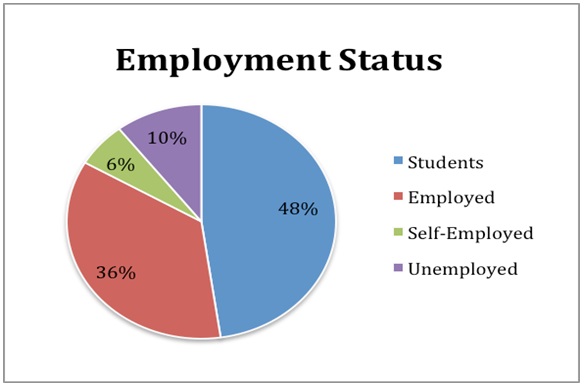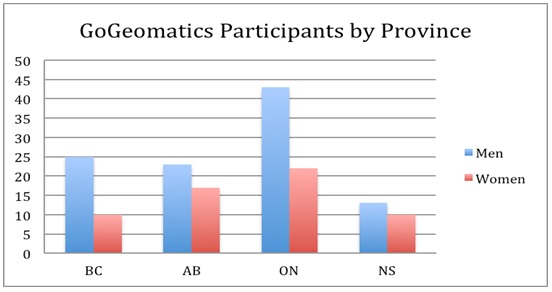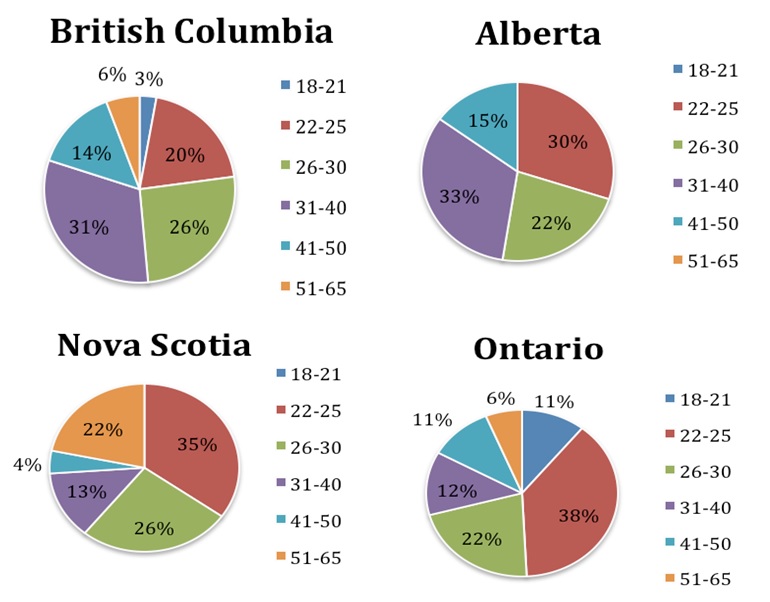
In September of 2014, GoGeomatics Canada conducted a survey at their monthly Back to School Social Events across the country. As the group leader for Edmonton and a young adult in the job market, I was curious to look into the results of the survey and help to analyze it. GoGeomatics socials, where the survey was distributed, are fun, free networking events for everyone in the Canadian geomatics community. They take place monthly in Ottawa, Toronto, Vancouver, Calgary, Edmonton, and Niagara. GoGeomatics took this opportunity to poll hundreds of members of the geospatial community on trends in job hunting and education, and I’d like to share some of that with you now.
The survey is a small sample of the geomatics industry in Canada as a whole, with under 200 participants. I’ve gotten to know the people who come out to network at these socials, and they truly constitute the heart of the geospatial community in Canada. They come from a diverse background and include industry leaders, professionals young and old, students, graduates seeking work and those seeking employees or contractors.
Let’s get specific. By aggregating the results from all of the socials, we can get an idea of who attended. Just under half of the participants are students, at 49%, while employed make up 36%. There is a small self-employed group of 6% and 10% are unemployed. There was a category for retired participants, but no attendees at the socials to collect data. Almost 50% of participants are not employed, making this social a great networking opportunity to meet industry professionals and start building up a network portfolio. Another thing to keep in mind, the data does not reflect on the number of people but rather the percentage of those who completed a survey. Out of the entire sample, only 17 people are unemployed, 1/10 of the entire sample.
Out of the 163 participants, 104 were men (64%) and 59 were women (36%). Let’s break down the demographics of the entire survey to seek possible similarities and difference by province. For each province, the female population is less than the male population. British Columbia (BC) and Ontario (ON) had just over double male participants. As for Alberta (AB) and Nova Scotia (NS), it was about a 60/40 ratio of men to women (see chart below).
Now that we have figured out the gender ratio, let’s take a look at what age groups come to these social events. The age groups were segregated into 6 different age categories, as seen below. The pie chart represents each province and the percentages of different age groups. British Columbia and Alberta’s largest age group was 31– 40 year olds. On the eastern side of Canada in Ontario and Nova Scotia, the largest age group participants were 22-25 year olds. Ontario was the only province with participants in each age group category, while Alberta’s participants fell into four age categories. Nova Scotia’s participants have a large young crowd, but also the largest group of 51-65 year olds. British Columbia and Ontario are the only provinces with participants in the 18-21 year old category.
Overall, GoGeomatics is attracting the right crowd of individuals from various age groups. There can always be improvements made to attract more people to the socials. By conducting this survey, it gives GoGeomatics a better understating and informative overview of who comes to these networking socials, and will help them make future socials even better.







Be the first to comment